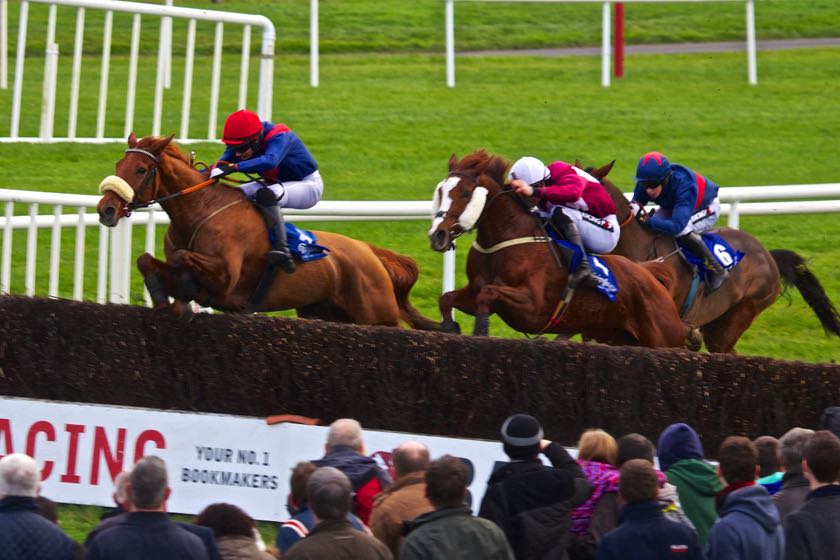Springtime is a golden period for fans of National Hunt racing. The season may be drawing to a close, but the jumps action certainly goes out with a bang. The huge Cheltenham and Aintree Festivals dominate the domestic scene, whilst over in Ireland, we have the high-class Punchestown Festival and one of the Easter Monday staying chase giants in the shape of the Irish Grand National.
Making its debut at Fairyhouse in 1870 – some 31 years after the inaugural edition of the Aintree showpiece – this 3m5f contest featuring 24 fences is Ireland’s equivalent of the most famous steeplechase in the world. It certainly places similar demands on stamina and jumping ability – albeit over far less testing obstacles.
Attracting contenders from the biggest yards in the game and a healthy contingent from the smaller local operators, Irish Grand National day is amongst the best-attended fixtures of the Irish racing year, as the crowds flock from Dublin and beyond to Fairyhouse Racecourse in Ratoath in County Meath. Good craic is guaranteed, but enhancing the day by backing the winner has proved difficult in a race susceptible to a shock result. Here, we look at the 23 editions between 2000 and 2023 (sadly, there was no race in 2020 due to the global health issues of the time) and highlight the stats and trends which may assist in identifying the likely contenders.
Age Trends

The Irish Grand National is open to chasers aged five and above, but none so young have landed the prize in over 100 years. At the other end of the spectrum, Overshadow is the oldest winner in the event’s entire history, having come home in front as a 13-year-old all the way back in 1953. The last winner older than 10 was Mudahim in 1997. Between 2000 and 2023, all winners fell into the 6-10 bracket, with the seven-year-olds faring best by a good margin. More generally, 18 of 23 winners (78.26%) were between seven and nine years of age, so that is certainly a good option to narrow down your options.
Weight Carried by Winner

Ahead of the 2024 edition of this brilliant betting heat, the minimum weight is 10st and the maximum 11st6lb – meaning the bottom four winners in the above table would race from out of the weights under present conditions. Discounting those results still shows a bias towards those with a lighter weight, with 14 of the remaining 19 winners (73.68%) carrying between 10st and 10st8lb. Only three of the 23 winners carried 11st or more.
Finishing Position Last Time Out

As we can see, a win or top-three finish last time out has been far from essential in this event. With five wins, first place is the most common last-time-out finishing position, but over half of the winners (52%) finished outside the first three. However, digging into the data shows that most winners at least ran creditably on their previous racecourse outing, with 17 of 23 (73.91%) having finished in the first six.
Rating of Winner

The century began on a high note when Commanche Court scored off a rating of 146 for Ted and Ruby Walsh, but only one of the next 13 winners nudged above the 135 mark. In contrast, every winner since 2014 had a rating of 136 or higher, signifying a strong upward trend. The average rating of the winner over the whole 23-race sample is 135.48. For the nine editions between 2014 and 2023, the average is over 6lbs higher at 141.56, suggesting class is increasingly the way to go in this one.
Previous Handicap Starts

Lightly raced sorts often fare well in major handicaps as they are more likely to have something up their sleeve from the assessor. However, that hasn’t overwhelmingly proved to be the case here. The classy Our Duke was the most lightly raced winner when scoring on just his fourth chase outing in 2017, but it has generally proven an advantage to have a little more experience, with 16 of 23 (69.57%) winners having between six and 15 previous chase outings. Those with 16 or more chase appearances came out worst, suggesting that, by that stage, they are unlikely to have anything to hide and their stamina reserves may be on the slide.
Fate of the Favourite
If you seek to back a big-priced winner in a major racing event, you may wish to make the Irish Grand National your first port of call. Between 2000 and 2023, the race featured winners at 20/1 (three times), 25/1, 33/1 (four times), 40/1, 50/1, and topping the lot, the success of Freewheelin Dylan at the frankly ludicrous price of 150/1 in 2021.
Seven of the remaining 12 winners were priced between 10/1 and 16/1, leaving only five with a single-figure SP, including three winning favourites. A £1 level stakes bet on the market leader over this period returned a loss of £1.50.
Other Stats
- 21 of 23 winners had previously won over 3m or further
- 19 of 23 winners had run within the last 51 days. Only one winner arrived on the back of a break of more than 89 days
- Only 7 of 23 winners had previously won at Fairyhouse
- 10 of 23 winners had previously won at Listed level or above
- Only one jockey picked up more than one win over this period – the now-retired Ruby Walsh, who grabbed the top spot in 2000, 2005, and 2019
- Dermot McLoughlin, Mouse Morris, Willie Mullins, and Jonjo O’Neill fared best amongst the trainers, with two wins apiece
- Presenting topped the sire’s table with three wins, followed by Commanche Run on two
- The National Hunt Chase proved the most informative race, with four winners emerging from that Cheltenham Festival contest

